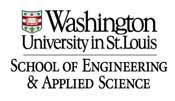This project is focused on the development and evaluation of novel, hybrid inorganic-organic nano-sorbents for advanced, ultra-high capacity CO2 sorption and magnetic separation processes. We propose to engineer a library of monodisperse, superparamagnetic (single crystal, single domain) nanocrystal cores with sizes ranging from 8 to 30 nm (discreet), which will be surface engineered with polyethylenimine (PEI), a highly effective, yet economical, CO2 sorbate. Specifically, magnetic iron oxide cores can be coated by PEI using different molecular weights and structures (linear vs. dendritic), leading to various coating thickness (PEI loading %) and combinations of amine types (primary, secondary, and tertiary amine). Tailored layer by layer (LBL) coating assemblies will also be evaluated with PEI using a negatively charged polyelectrolyte polyacrylic acid PAA alternately immobilized onto particle surfaces at different ratios and surface thicknesses (thus available sorption sites). CO2 sorption capacities, reaction kinetics and regeneration potential will correlated to the PEI and PEI/PAA loading capacities, composite structures, and magnetic separation efficiencies. Taken together, we are proposing to create a new hybrid material platform with ultra-high surface areas, which are extremely favorable enthalpies of interaction (with CO2), and highly magnetic in the presence of low magnetic fields, which is the key to potential separation and material regeneration. To date, such multifunctional, composite materials have not been specifically developed and demonstrated for CO2 capture and separation, despite the high potential. This project will seed larger proposal(s) submitted to DOE, DOD, and NSF, among others.

